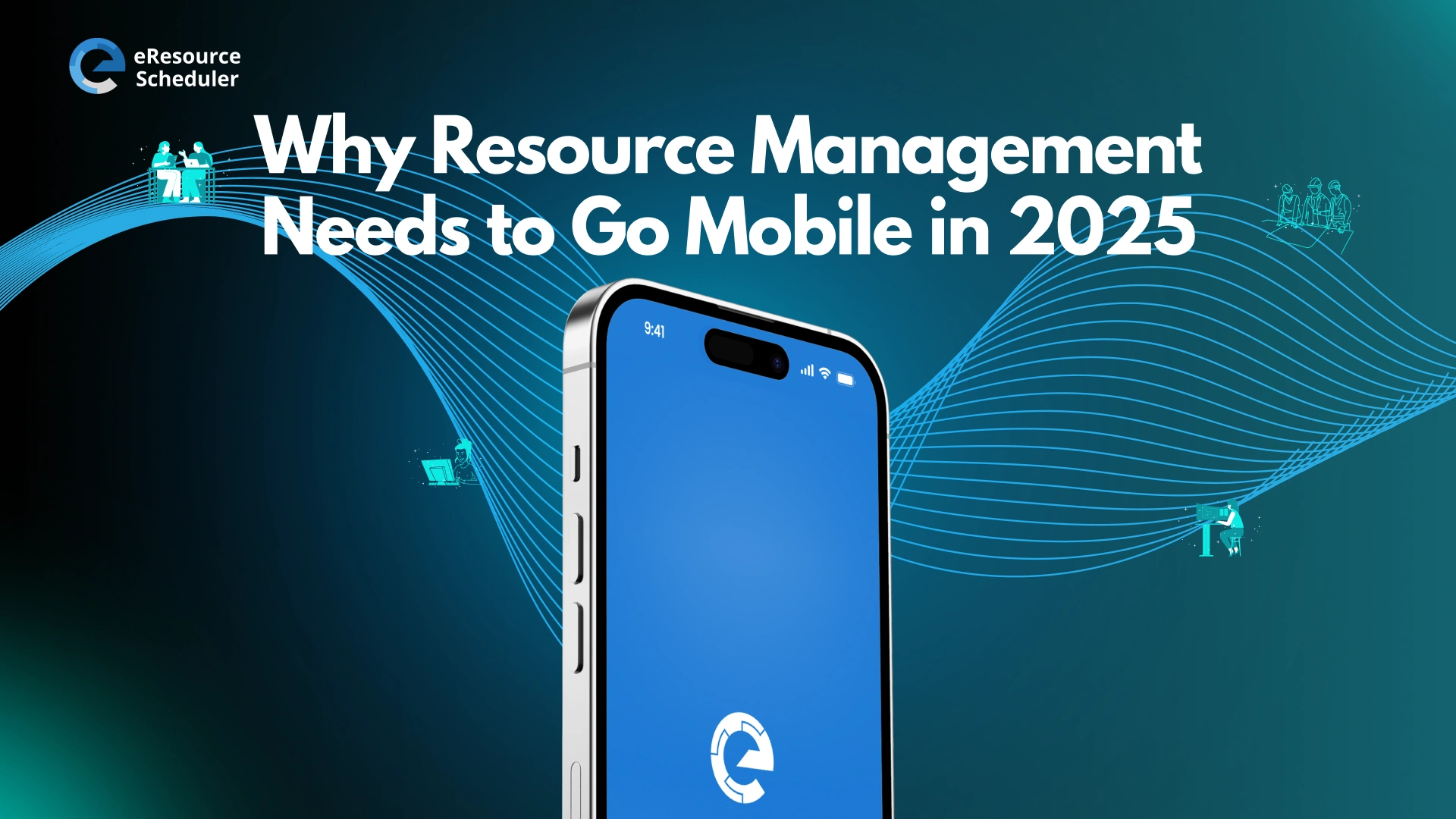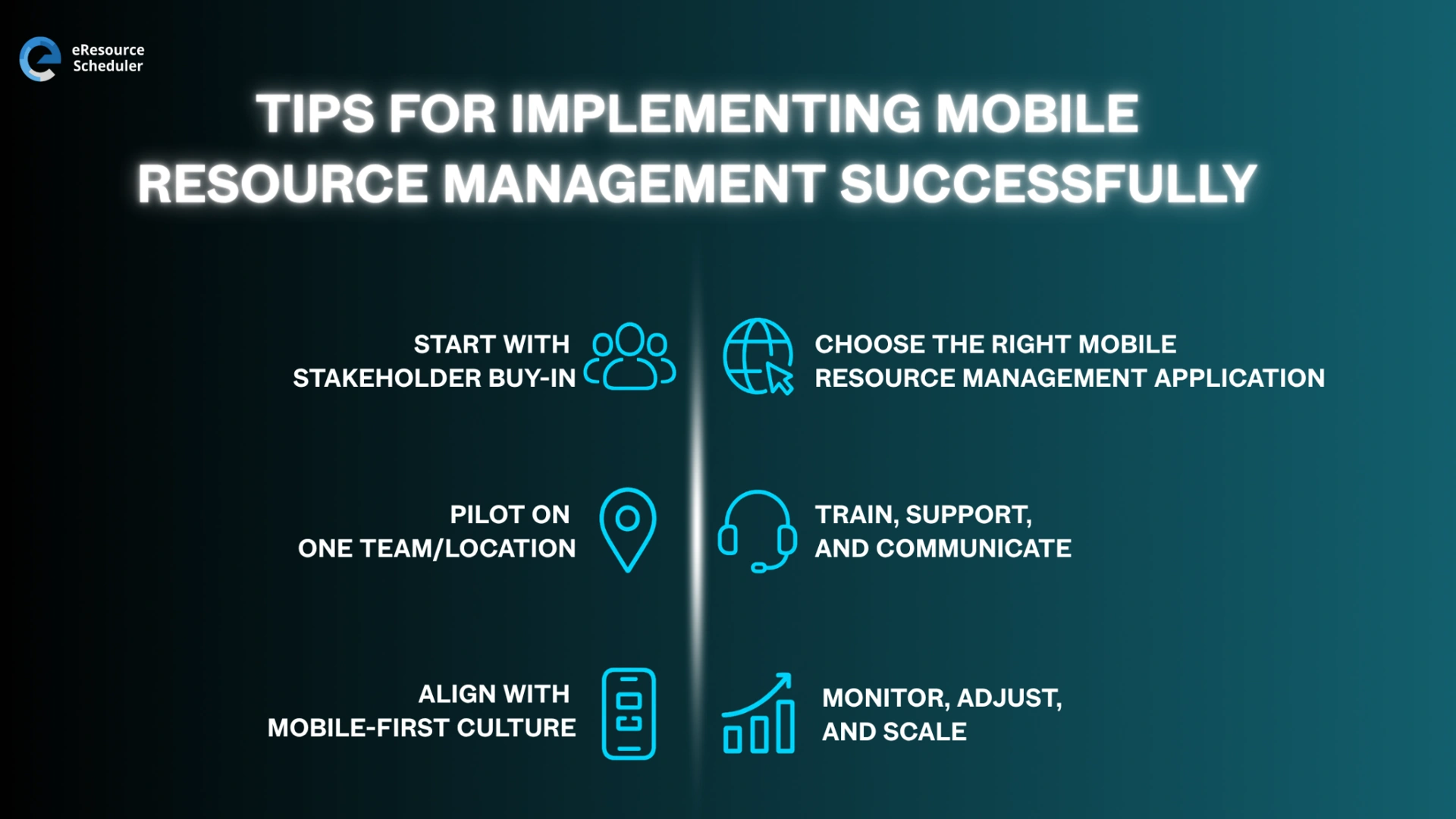
The world of work has gone mobile, and so must the tools that keep it running. In 2025, relying on desktop dashboards or static spreadsheets to manage people, projects, and capacity feels like trying to steer a Tesla with a flip phone. Teams move faster, work happens everywhere, and decisions can’t wait for someone to get back to their desk. That’s why every forward-looking organization now needs a resource management application that works seamlessly on mobile.
Today’s resource management isn’t about headcount charts or weekly reports. It’s about agility. Managers want real-time visibility into who’s available, what’s booked, and where the bottlenecks are. Employees expect to update timesheets, view schedules, or request changes from their phones and not a clunky desktop portal.
Whether you’re running a field services team, a consulting firm, or a hybrid engineering department, mobility is the missing link between smart planning and smooth execution. A mobile-first resource management application bridges that gap. It syncs data in real-time, reduces scheduling friction, and lets decisions travel as quickly as your team does. It’s not just about convenience, it’s about competitiveness.
The workforce isn’t always sitting in the office anymore. Field technicians, remote workers, and hybrid teams need to be able to access their assignments, update statuses, and request changes from anywhere. A mobile resource management application gives real-time connectivity.
Managers need accurate, up-to-date information. Mobile tools let you:
This immediacy reduces lag between problem and solution.
A mobile resource management application keeps teams aligned, giving managers instant visibility into assignments and availability. It also empowers employees to update progress and respond to changes on the go, making workflows faster and more efficient.
Here are a few key benefits that make it essential in 2025:
When your team uses a mobile app, everyone sees assignments, availability, and conflicts in near-real time. No more “I didn’t know”, “I forgot”, or chasing updates.
With mobile tools, you can:
That agility speeds up delivery and reduces idle time.
If you can see who is free, who is overbooked, and what tasks lie ahead, via mobile, you can optimize bookings and avoid over-allocation. Overbooked staff = burnout + cost leakage.
Mobile apps also empower frontline staff: they can claim jobs, track progress, request support, submit updates, and they feel in control rather than waiting for someone else. That improves morale and performance.
Especially for field teams or clients on the move, being tethered to a desk is not acceptable. A mobile resource management application supports dynamic environments, for example, job changes, shift swaps, and sudden resource needs.
To get real value, the app must be mobile-first, intuitive, and offer real-time syncing. Offline functionality, robust integrations, and actionable dashboards ensure the tool supports daily operations rather than complicating them.
To get the most out of mobile resource management, these are the features worth prioritizing:
If the app is clunky or built for desktop, then ported to mobile, you’ll struggle with adoption. The design must be mobile-native: simple, fast, responsive.
Push alerts, comments, status updates, all must live on mobile so decisions aren’t delayed until someone returns to their desk.
Resource management doesn’t live in isolation. The mobile app should integrate with your broader ecosystem: CRM, project management, HR systems, time-tracking, etc.
Managers need visibility. Mobile dashboards showcasing utilization, bottlenecks, and upcoming tasks help make wise decisions on the fly.
With remote access comes risk. Mobile resource apps must handle security, data encryption, user authentication, and restricted access.
Delaying adoption means lost opportunities, slower decision-making, and overworked teams. In a world where competitors are leveraging mobile agility, staying tied to desktops is a strategic risk.
Here’s why acting sooner rather than later makes a difference:
If your competitors give teams mobile empowerment and you don’t, you’ll lose speed, agility, and talent. In fast-moving projects, being slow equals falling behind.
Projects involve more moving parts: remote staff, subcontractors, and multi-site assignments. A mobile resource management application helps coordinate complexity without chaos.
Legacy systems, desktop only, patchy mobile add-ons, will increasingly struggle. Migrating later may cost more, require more retraining, and disrupt operations. Early adoption gives you head-start benefits plus a smoother transition.

Start with a pilot team, gather feedback, and provide clear training. Engaging both managers and front-line staff early makes adoption smoother and ensures the app actually improves workflows.
Here are a few practical strategies to make adoption smoother:
Get leadership, team leads, and front-line staff aligned. Explain the benefits, use cases, and how it improves daily work.
Look for vendor options designed for mobile first. Focus on usability. Conduct pilot tests with real users.
Roll out in a controlled environment: one team, one site. Gather feedback, refine workflows, and iron out bugs.
Even the best mobile app fails if people don’t use it. Provide training, quick reference guides, mobile-friendly help, and encourage usage.
Track key metrics: resource utilization, task completion time, mobile adoption rate, and user satisfaction. Use those insights to optimize and expand.
Encourage team behavior shifts: mobile check-ins, on-the-go updates, and less reliance on back-and-forth emails. Reinforce that mobile is the standard workflow.
Emerging tech like AI, 5G, and edge computing will make mobile resource management even more powerful. Being mobile-ready ensures teams can act faster and handle hybrid work with confidence.
Let’s explore how it fits into the future of work.
Mobile tools aren’t just about convenience. With 5G and edge computing, mobile resource management applications can handle more data faster, even in remote or on-site environments.
Once your field team has instant connectivity and intelligence, the app becomes a command center for resource orchestration rather than just a convenience.
Organizations are moving to hybrid staffing and remote resource models as a baseline. That means mobile must be core, not “nice to have”.
Your resource management strategy must support where people are: at home, in the field, in client locations, or in the office.
A mobile resource management software reduces idle time, prevents resource conflicts, and improves task turnaround. The efficiency gains and smoother operations translate directly into measurable cost savings and higher productivity.
Think of resource management as an enabler:
Over time, these savings add up. You gain both efficiency and strategic agility.
In 2025, mobile isn’t optional but foundational for effective resource management. A robust mobile resource management application enables flexibility, real-time control, better utilization, and a future-proof workflow.
If you’re still anchored to desktop-only tools, you’re missing the agility your teams demand and your competitors will exploit. Embrace mobile now, and your projects, teams, and bottom line will thank you.
Your teams are already mobile. It’s time your resource management caught up. Book a quick demo of eResource Scheduler and see how effortless everything can be when everyone is perfectly aligned.
1. Why is mobile resource management important in 2025?
Because work happens everywhere now—offices, client sites, remote setups. Mobile resource management ensures teams stay connected, updates stay real-time, and decisions don’t wait for someone to get back to their desk.
2. How does a mobile resource management app improve team productivity?
It lets managers allocate, reassign, and track tasks instantly, while employees can update progress or request changes on the go, cutting downtime and keeping everyone synced.
3. What features should a good mobile resource management app have?
Real-time syncing, offline access, intuitive UI, push notifications, integration with HR or project tools, and strong security. Mobile-first design is non-negotiable.
4. Is mobile resource management relevant for hybrid or remote teams?
Absolutely. It bridges the gap between distributed teams, giving everyone visibility into who’s available, what’s booked, and what’s next, no matter where they are working from.
5. What are the long-term benefits of going mobile with resource management
Higher utilization, faster decisions, fewer conflicts, and a more agile, future-ready workforce, all translating into measurable cost savings and happier teams.
Plan Smarter. Schedule Faster.
Join thousands already using eResource Scheduler to align teams, time, and tasks seamlessly.